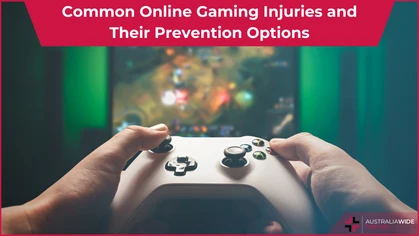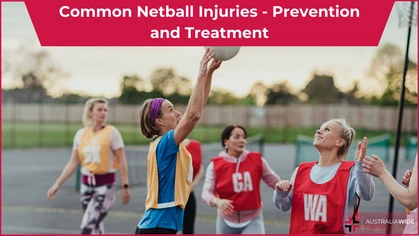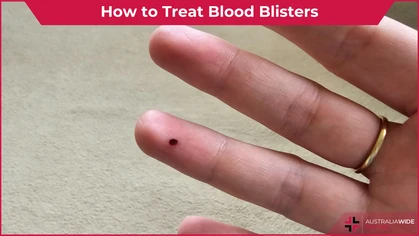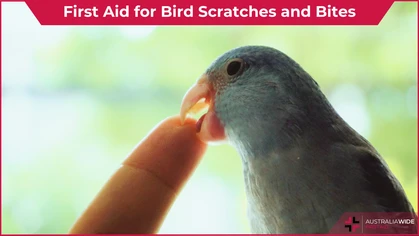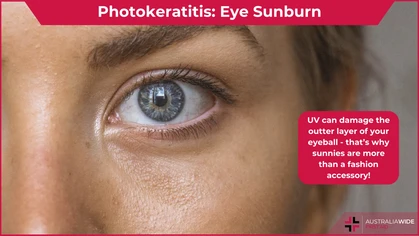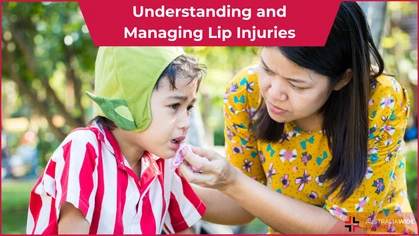First Aid for Concussion: A Comprehensive Guide

Injury
 Concussions are a significant public health concern in Australia, particularly among athletes and children. According to recent data, sports-related activities account for a large proportion of concussions.
Injuries to the head are always regarded as serious because they can inflict damage to the brain and spinal cord as well as damaging the bone and soft tissue. As a result, head injuries can be devastating to the casualty.
Head injuries can be invisible to the eye. In many instances, a casualty who appeared unaffected after an incident will collapse with life-threatening symptoms some hours later.
This may be due to ‘whiplash’, the sudden movement of the head forward and backward on impact which may cause a small bleed in the brain that eventually increases and applies excessive pressure on the brain tissue.
Such injuries can mislead the first aid provider by not exhibiting the expected signs and symptoms immediately after an incident. As a first aid provider you should always take head injuries seriously.
According to the Australian Institute of Health and Welfare, concussion:
Concussions are a significant public health concern in Australia, particularly among athletes and children. According to recent data, sports-related activities account for a large proportion of concussions.
Injuries to the head are always regarded as serious because they can inflict damage to the brain and spinal cord as well as damaging the bone and soft tissue. As a result, head injuries can be devastating to the casualty.
Head injuries can be invisible to the eye. In many instances, a casualty who appeared unaffected after an incident will collapse with life-threatening symptoms some hours later.
This may be due to ‘whiplash’, the sudden movement of the head forward and backward on impact which may cause a small bleed in the brain that eventually increases and applies excessive pressure on the brain tissue.
Such injuries can mislead the first aid provider by not exhibiting the expected signs and symptoms immediately after an incident. As a first aid provider you should always take head injuries seriously.
According to the Australian Institute of Health and Welfare, concussion:
- Was the most common head injury for those aged 5–14 and hospitalized with a head injury (1,500 cases), and the third most common for 15–24-year-olds (1,500 cases)
- Was the third most frequent type of head injury for females presenting to ED (7,800)
- In males presenting to the ED had 1.5 times the number of diagnoses (11,700 cases) than females
- Was among the top ten head injury diagnoses during hospitalization for people aged under 45
- People under 25 made up 63% of concussion hospitalizations

Recognizing a Concussion
Concussions can present a variety of symptoms, which may appear immediately or develop over hours to days. Common symptoms include:- History and mechanism of injury
- Visible head wounds
- Deformation of the skull
- Altered/deteriorating level of consciousness
- Evidence of fluid leaking from ears or nose
- May have unequal pupils
- Headache or pressure in the head
- Confusion or feeling dazed
- Dizziness or "seeing stars"
- Ringing in the ears
- Nausea or vomiting
- Slurred speech
- Delayed response to questions
- Fatigue
- Any fluid oozing from the nose or ears. This could be related to cerebrospinal fluid (CSF), which surrounds the brain. When a fracture occurs, usually at the base of the skull, the fluid leaks out under pressure into the ear and nose canals.
- Uneven sized pupils. The pupils of both eyes should always be the same size – smaller when in a bright environment, and bigger when in a dark environment. If this is not the case, or one pupil is larger than the other, this indicates there is likely to be an issue with the brain function affecting the optic nerve.
- Black eyes and bruising. The kinetic energy from a blow which is transmitted through the head and brain is expelled through soft tissue, e.g. the eyes and behind the ears. Bruising at these points indicates the head has suffered exposure to considerable force.
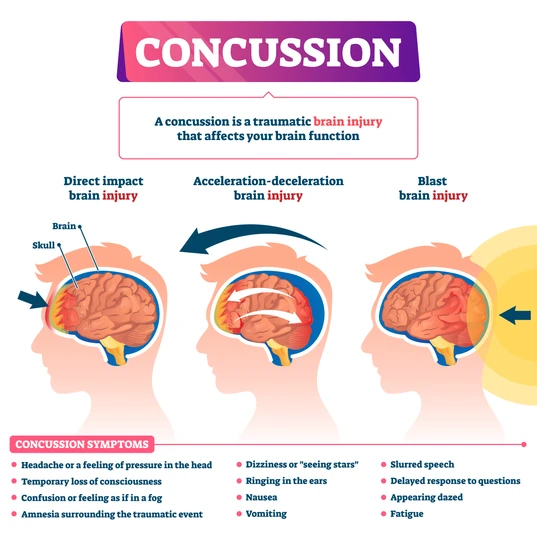
Immediate First Aid Steps
As with any suspected or visible injury, follow DRSABCD. If the suspected concussion occurs during sport, follow the ‘when in doubt, sit them out’ mantra. [] Any athlete who develops symptoms consistent with concussion should be removed from play and undergo a graded return to sport strategy. Ensure Safety If the injured person is in a hazardous environment (e.g., on a road), move them to safety if it can be done without causing further injury. Check Responsiveness Always check the patient’s response and whether they have any alteration of consciousness. Ask age-appropriate questions such as:- What is your name?
- Do you know where you are?
- What colour is my shirt?
- Wiggle your fingers?
- Can you count to 5 for me?

When to Seek Emergency Care
All head injuries, regardless of severity, should be assessed by a medical practitioner as soon as possible. Immediate emergency medical attention is necessary if the person exhibits any of the following symptoms:- At any point the casualty loses consciousness, regardless of how long for.
- Persistent or worsening headache.
- Repeated vomiting or nausea.
- Difficulty walking or coordination issues.
- Seizures.
- Unusual behaviour or personality changes.
- Blood or clear fluid draining from the nose or ears.
- Unequal pupil size or changes in vision.

Recovery and Monitoring
After initial treatment, rest is vital for recovery from a concussion. This includes both physical rest and cognitive rest (limiting activities that require thinking and concentration, such as reading or using electronic devices). Gradual return to normal activities should be guided by a healthcare professional.
Conclusion
Proper first aid and timely medical evaluation are crucial in managing concussions. Awareness and education on the signs and symptoms can help mitigate the risks associated with head injuries. Always prioritize safety and seek professional medical advice to ensure a comprehensive approach to concussion management.
Originally published at
https://www.australiawidefirstaid.com.au/resources/first-aid-for-concussion
as part of the Australia Wide First Aid Articles Library



